
Gingko Audio Sextet Speaker System
Enjoying everything the Gingko Swarm has to offer with many options available too!
Over the years, I have had the opportunity to review several different speakers and speaker systems. Each one has the character that sets it apart from the next. So, when you can audition speakers and have the designer help set them up and explain them to you, it aids in giving a full review. Therefore, when the opportunity presented itself late last year, I jumped at the chance.
Usually, the first contact is a brief discussion on the product and a time to work out logistics. However, Vinh Vu from Gingko Audio, and I spoke more about the Sextet system’s potential. The Sextet system is more than just a pair of monitors; it is a system complete with subwoofers that supplement them to augment the standard stereo monitors’ sonics. The system is available in multiple configurations without the monitors for inclusion in existing systems. It was, for this reason, we decided to review the Sextet in a phased approach.
Once we decided on the phased approach, the next step was determining the configuration that best fits the listening room used for the review. The space in question was reasonably large, and after a bit of discussion, we decided to use a pair of Sextet Swarm 2s. This particular configuration includes one powered and one passive subwoofer. It also allowed us the flexibility to add the monitor later, and for the second part of the review, ultimately create a Sextet 6.2 configuration, but more about that later in the evaluation.
Over the next several weeks, since the weather wasn’t cooperating, we worked on speaker placement. Vinh was extremely helpful in working with me to get everything set up. He took all the work out of doing the legwork. I provided him detailed dimensions of the room and pictures. He arrived in early January with the first of the speakers, speaker cable. In a brief time, we had everything installed. Admittedly, he did most of the work; I just watched at the simplicity of the installation.
Before going too deeply into the review itself, it is essential to discuss the Sextet system’s underlying premise. That is to enhance a listener’s experience by increasing their exposure to frequencies, typically lost in a typical playback system. The Gingko Sextet became a reality through a collaborative effort between Gingko Audio of New Jersey, Duke LaJeune from AudioKinesis of Texas, and Salk Sound of Michigan. Their technologies include the Tubulous and Clarissa LE designs, AudioKinesis’ Swarm Subwoofer technology, and Salk’s cabinetry.
These technologies together form a synergy that is the heart of the Gingko Sextet family of products. Regardless of which configuration you select, it will utilize some or all of them. Also, Vinh has introduced an additional layer of isolation to allow the speaker system to perform even better. The speakers use patented ARCH Acoustic Resonance Clarifiers. These are feet that are used instead of traditional ones. They can also be used in other applications and deserve their review themselves. Hopefully, that will be something coming at a later time.
The Start of Something Big
Once placed correctly, the equipment, Vinh and I sat and talked for a little. During that time, we also adjusted the volume and crossover for the subwoofer system. The crossover is set precisely where you would expect; it is not intended to replace the bass on your monitors but rather to augment the lower range. Since my system used Martin Logan ReQuest speakers, the bass is always a challenge. The crossover is usually noticeable and, while not horrible, certainly not as seamless as one would like.
Additionally, the volume augments rather than overpowers the stereo system. The volume setting takes a bit of work since it is a personal preference as much as anything. However, we set it reasonably quickly and could take some time together to discuss the changes before he departed.
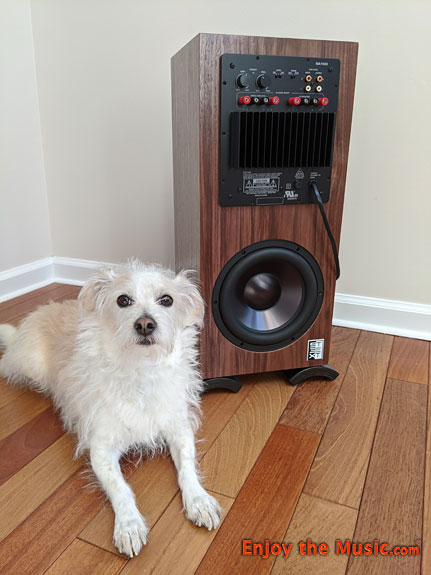
The first change was the smoother bass. Although not entirely gone, the bass crossover markedly decreased to the point where you had to strain to hear it. This transition plagues these particular speakers, especially on selections with high to low bass transitions. However, unlike other subwoofer systems, a smoothness made things come together far better than in the past.
The second change noticed before he left was the richer soundstage. There was no specific change; it was not that the bass was specifically better once the crossover point crossed, but rather that everything coalesced into a more cohesive form. Sounds seemed to have more substance and meaning, giving a more visceral impact than without the Sextet Swarm, but there was undoubtedly no outward or unwanted change.
Review – Part One
The next several weeks after Vinh left were spent getting used to the changed in my reference system. It was not like changing a cable or adding a component. In this case, I added a subwoofer system that added sonic frequencies that were not entirely audible, so there was no way to determine how much change occurred. Indeed, the bass was smoother, and there was a notable difference in the system itself, but to be as neutral and impartial as possible, I gave myself time to adjust to the difference. One nice thing of note, the speakers themselves look far more like pieces of furniture than most speakers, thanks to work by Salk Sound, merely beautiful.
Once acclimated, the first selection was Pink Floyd’s Dark Side of the Moon [Capital Records, CDP 72435 8213621]. The music turned out to be something of an epiphany. The first thing that became apparent is that the number of subwoofers did not detract from the music. There was no muddy sounding bass or pooling of sound anywhere in the room itself. I sat on the floor and listened to make sure that was not the case at all.
The second and more critical revelation that came from the selection was the increased soundstage present with the Sextet Swarm turned on. The Martin Logan speakers do an outstanding job of reproducing some of the most challenging music passages. With the right equipment, they have shown some detail that seemed hidden, but even so, it never seemed to come as alive as it did with the Sextet Swarm. It was like all the soundstage was there, but there was more of it. Somehow the sound was smoother and in sufficient detail.
The next selection was Billy Joel’s “Miami 2017 (Seen the Lights Go Out on Broadway)” [Songs In The Attic, Mobile Fidelity/Capital, UDSACD 2092]. This live track involves many sounds and quickly humbles even my Martin Logan speakers if played too loudly. The bass tends to lack the smoothness one would like. Enough is going on that you might easily overlook it. However, as was experienced early on, the bass transition was no longer a problem with the Sextet Swarm.
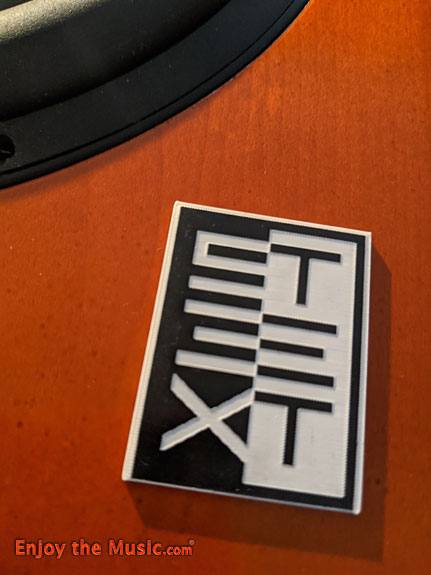
Again, when you add the Sextet Swarm, the most exciting change is how the music surrounds you. It seems as though the entire soundstage envelopes you in a way never seen before. The bass doesn’t overwhelm you. Instead, it contributes to the energetic character of the music itself in such a way that it makes you become a part of the performance itself. You nearly believe you are there yourself.
The final selection in this part is Patricia Barber’s “Ode to Billy Joe” [Café Blu, Mobile Fidelity, UDSACD 2002]. This blues track is again heavy on the bass but is in no way muddy. In fact, like the other selections, the difference between the sound with the Sextet Swarm and without is pretty substantial. The vitality is somewhat startling and smoother. It breathes a lifelike quality into an already naturalistic recording. The Mobile Fidelity version, which is undoubtedly far better than its counterpart, will take your breath away. The soundstage alone is divine. When added to it, the bass’s visceral impact and the way everything seems to come together is fantastic.
After a few weeks of auditioning, early in March, before the COVID-19 quarantine, Vinh again came with the second part of the review sample, the monitors. The monitors, coupled with the two Sextet Swarms I already had, formed the Sextet 6.2 system mentioned earlier in the review. It was this system that I had the opportunity to review for far longer than intended.
Review – Part Two
Vinh Vu of Ginko Audio arrived with an elbow bump and two boxes that contained the monitors. The monitors were simple to install. They perch on top of the two powered subwoofers and fit like a glove. There is no extra hardware to install. It is a question of jumpers to get them into the correct configuration. The only configuration decision is how much dispersion you wish. The tweeter is off-center, so one way will give you more distribution, and one will provide you with that perfect center seat.
He set them with the tweeters on the inside position giving it more pinpoint accuracy. Then we sat down and again had more discussion about the review. We discussed how the evaluation had been going thus far, and without giving much away, I relayed my findings thus far. He made a few changes with the volume, and that was it. Again, given the timing, no one stayed for too long, and it did not take much to get things set up.
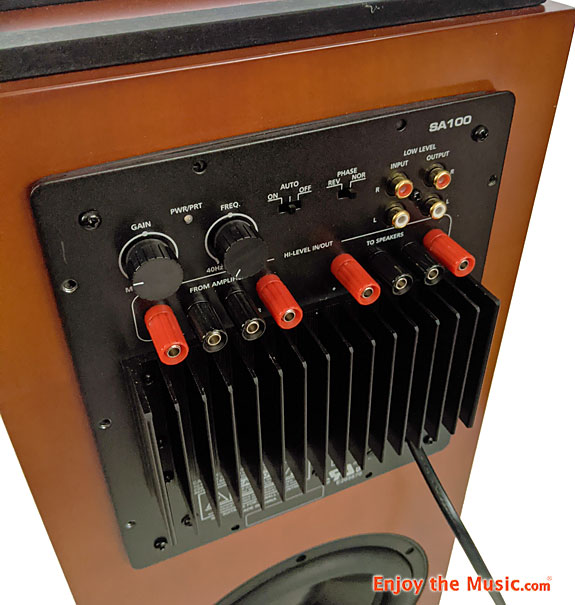
As luck would have it, or not, shortly after the monitors arrived and the newly created Sextet 6.2 installed that the pandemic became an actual reality, and we were all quarantined. COVID 19 brought much disruption to my life. The one good thing that came out of it was the sheer amount of time it allowed me to spend with the new speakers. As luck would have it, I had another review at the same time. The virus led to my having the speakers for quite a lot of time, time very well spent, I might add.
First, it is a different experience when you go from an electrostatic speaker to a dynamic one. They are two other technologies with wildly different sonic characteristics. That does not mean that things do not sound the same, but rather that the way they communicate is different. It is hard to describe, but there is a fluidity that I have found with electrostatic speakers, which is nearly impossible to find in speakers with dynamic drivers.
Therefore, it takes a bit of time to get used to them after spending a great deal of time with my electrostatic speakers. I noticed with the Sextet 6.2 speakers that there was no “normal” period to get “used” to them. That is not to say I did not have to let them settle in, or perhaps vice versa, but rather, that they did a great job of reproduction. From a personal standpoint, the Swarm part of the speaker system likely did a large amount of easing the transition. Though certainly there is no way to prove that, or reason to do so, the increased soundstage and overall increase in vitality is one reason I favor the Martin Logan speakers so much in the first place.
Once I had become more accustomed to the new monitors, I began experimenting with the tweeter placement. As mentioned earlier, when Vinh left, they were both in the inside alignment. That is, they were both closest to each other. This position gives the listener the sweet spot most people use to hear and the almost pinpoint accuracy. With the addition of the Swarm subwoofer system, that sweet spot was reasonably large, so the off-axis listening was reasonably large.
The large sweet spot becomes apparent on a selection like “Turn to the Sea” [LagqSpin, Telarc, SACD60647]. The Los Angeles Guitar Quartet plays the piece, and the instruments’ placement requires that everything be correct. The sweet spot is essential for speakers that need it. In this case, it is relatively broad, and you do not feel awkward not being there. Again the soundstage is expansive and the music exceptionally lifelike. In this particular recording, there is a multichannel version, which many years ago, I reviewed. It does not suffer from the sweet spot issue, but it also did not sound as good as the one I heard from this system.
After experimenting with the tweeters in the inside alignment, I changed the monitors to put the outside alignment’s tweeters. This action worked as one might predict. It allowed for far more dispersion and less of that sweet spot sound. As you might imagine, it did undoubtedly open up what was already a reasonably open soundstage. The placement of instruments became less distinct but no less palatable. There was no impact on the playback’s quality, but while it was perhaps better on orchestral music, it did seem to lose a bit of coherence for my taste in more intimate settings.
It slightly opened up a selection such as Johannes Brahms’s Symphony No. 2 in D, Op. 73 [Pentatone, PTC 5186042] performed Hans Vonk conducting Netherlands Radio Symphony Orchestra, for example. In this case, while you might be able to identify all the instruments’ location, most would likely settle for the performance’s full majesty. Therefore, the pinpoint accuracy might not be as necessary, but the airiness and off-axis dispersion might. It becomes far more a matter of personal preference than anything else with these particular speakers as both are equally engaging to my ears. Far more importantly, neither seems to suffer any degradation in sound quality.
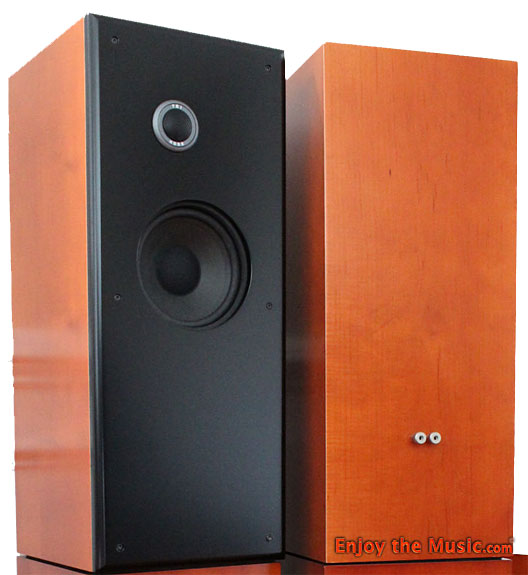
I returned the monitors to the original configuration once I completed the outer configuration testing. Although the outside alignment did have its benefits, my taste was on the inside. Though I stress, since changing them is easily accomplished, there is no reason that you cannot change them should you feel the urge on a whim is you desire.
The only thing left to do was put the entire system through its paces. The first selection used was The Pretenders “Back on the Chain Gang” [MoFi Collection 2, Mobile Fidelity, SACD 52]. The Mobile Fidelity is a higher quality version of the popular song. Mobile Fidelity did a fantastic job of remastering it, and it shows exceptionally well on the Sextet 6.2. The music is crisp and clear. The vocals are exceptional, and most importantly, the sound’s cohesion is just out of this world. You can genuinely hear the instrumentals’ attack and decay while enjoying the vocals at the same time.
The sound would be incredible by itself, but with the enhanced soundstage and increased sonics, you can feel the beat of the music itself. It puts you into another universe. It seems that the system adds something, yet it has not added anything at all. It highlights the difference between dynamic and electrostatic speakers because you can play things much louder and thereby get a far more impactful sense of presence.
A second selection from the same album, Ray Charles’s “Come Rain or Shine” [Mofi Collection 2, Mobile Fidelity, SACD 2], again increases the recording’s fidelity with a better remastering. The sound of Ray Charles’s voice is exceptionally realistic and very lifelike. It is easy to close your eyes and become engrossed in the recording. The soundstage envelopes you in such a way that you are once again carried to another place. One can easily imagine oneself listening to the recording taking place. It is easy to see why the monitors are a perfect complement to the Sextet Swarm system.
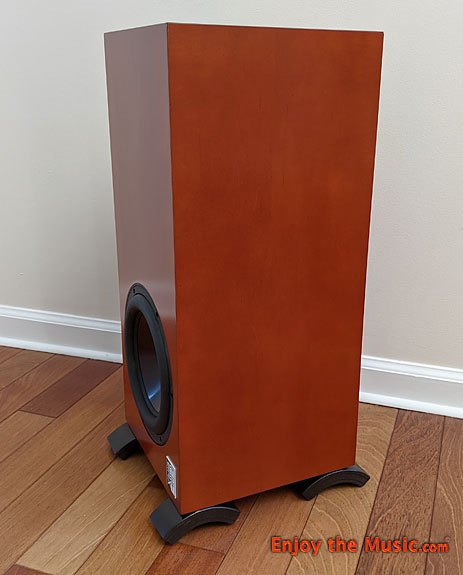
The Conclusion
The Gingko Audio Sextet is a very well thought out system of components. The Sextet comes in multiple configurations aimed at nearly every scenario, either in place or in someone’s dreams. It seemingly adds something that was somehow lost. It does not detract from anything already inherent in the system. How it does so is still a mystery to me.
The whole system starts with the Sextet subwoofer array. Although the thought of multiple configurations and placements might seem overwhelming, it is not. I found that it is straightforward to operate and setup, even without Vinh’s help. The arrangement does not seem to matter overly much, but I did not evaluate that fact either. You can connect the subwoofers with different cabling types according to your preference. Cable changes were not part of this particular review as it remained consistent. My suggestion would be to start with a realistic configuration and an excellent line-level grade cable and then experiment over time. The speakers look more like pieces of furniture in their construction, and overall outward appearance does not hurt either.
If you do not have a set of monitors, you should consider Sextet 6.1 or Sextet 6.2. While I cannot speak for the 6.1, it is similar to the 6.2, with one powered subwoofer and one unpowered. The monitors are worthy of a listen and are well made, good looking, and sound great. However, I would not replace your existing speakers with them unless you have listened to them. I still prefer my Martin Logans, but if I were going to buy a pair of dynamic driver speakers, I would put them on a shortlist.
However, luckily, as said earlier, some options do not require your stereo monitors’ replacement. Many mini Swarm options do not need your stereo monitors’ replacement, including the one in this review. This review’s option gave me the ability to enjoy everything the Gingko Swarm had to offer without replacing my prized Martin Logans. You have this and many other options available to you as well. These definitely should be explored as well before making a final decision.
Overall, I would give this system a shot. You haven’t heard everything your system has to offer until you have listened to it with the Gingko Audio Sextet installed. Admittedly, this was one of the most desireable speaker systems I have ever given back. If the time comes for me to add equipment, the Sextet is on a concise list of things I want, and that should tell you something.
| Tonality | |
| Sub–bass (10Hz – 60Hz) | |
| Mid–bass (80Hz – 200Hz) | |
| Midrange (200Hz – 3,000Hz) | |
| High Frequencies (3,000Hz On Up) | |
| Attack | |
| Decay | |
| Inner Resolution | |
| Soundscape Width Front | |
| Soundscape Width Rear | |
| Soundscape Depth | |
| Soundscape Extension Into Room | |
| Imaging | |
| Fit And Finish |  |
| Self Noise |  |
| Value For The Money |  |

Check out Enjoy the Music!
See many great reviews by Enjoy the Music.com at this link.
Specifications
Type: Multi-module loudspeaker system
Monitor: Two-way monitor using Tubulous technology
Tweeter: 1″ silk dome using TBI HDSS patented technology
Woofer: 6.5″ paper cone custom drivers
Frequency Response: 45Hz to 20KHz (+/- 3dB)
Impedance: 10 ohms nominal, 8 ohms minimum
Sensitivity: 89dB/W/m
Recommended power: 30 Watts
Dimensions: 10″ x 10″ x 24″ (WxDxH)
Weight: 34 lbs.
Mini Swarm Subs:
8″ woofer, port tuned to 24 Hz
Powered version with built-in 100 W/channel Class D power amp with
electronic crossover with volume, frequency and phase control
Dimensions: 10″ x 10″ x 22″ (WxDxH)
Weight: 42 lbs. with amp, 33 lbs. without amp.
Include Gingko Audio patented ARCHs as vibration-control feet
Standard finishes: Matte Black, Cherry, and Walnut.
Custom finishes available at additional cost.
Pricing:
Reviewed with the Sextet 6.2 and two Swarm 2 subwoofer.
Sextet 2 Two Sextet monitors $4995
Sextet 2+2 Two Sextet monitors and two dedicated stands $5795
Sextet 4.1 Two Sextet monitors, two primary subs, outboard sub amplifier $7495
Sextet 4.2 Two Sextet monitors, two powered subs $7495
Sextet 6.1 Two Sextet monitors, two primary subs, two outboard subs, outboard sub amplifier $8995
Sextet 6.2 Two Sextet monitors, two powered subs, two outboard subs $8995
Sextet Swarm 2 One powered sub with built-in amp and one passive outboard sub $2000
Sextet Swarm 2 Plus Two powered subs $2500
Sextet Swarm 4 Four passive subs (two primary and two outboard) driven by one external amplifier
Company Information
Ginko Audio
Website: www.GinkgoAudio.com








Leave a Reply
Want to join discussion?
Feel free to contribute!